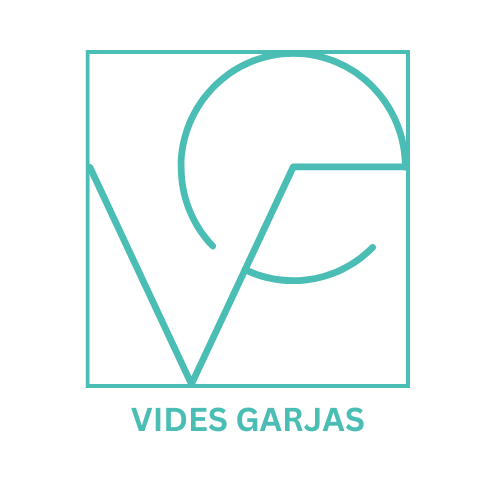While reviewing the supplemental topics in Psychology of Instructional Design & Technology (IDT 102), one theory stood out: Robert Gagné’s Conditions of Learning. His framework lays out a structured process for lesson design and outlines essential conditions that support learning. As an educator, I found his approach practical and easy to apply.
I reflected on how this theory aligned with my own teaching experiences. I revisited a curriculum I designed to match DepEd’s standards and the goals of the school where I previously worked. One objective asked students to explain how culture, history, environment, or other factors influence a text. The lessons followed a logical sequence and focused on gradual reinforcement—a method that mirrors Gagné’s framework.
Gagné’s Nine Events of Instruction
Gaining Attention: Reflecting and Applying Techniques
Focusing on a task is difficult when distractions are everywhere. When I need to concentrate, I play classical music to signal my brain that it’s time to study. The same principle applies to teaching—capturing students’ attention is the first step in learning. To introduce a lesson, I used engaging activities such as showing a video clip of a Filipino folk tale. This immediately drew students into the discussion. Multimedia presentations emphasizing cultural and historical elements, along with thought-provoking questions like, “How would this story change if it took place in your country?” sparked curiosity and encouraged participation.
Informing Learners of Objectives
Recently, I joined a hiking camp. Before we start our trek, the guide gathers everyone together. Instead of just saying, “Let’s go hiking,” the guide clearly explains the day’s objectives. He said that we would hike to the beautiful waterfall, learn about local plants along the way, and practice some basic survival skills. He stated clear objectives so that everyone knows what to expect and what they should focus on. It builds excitement and helps each hiker understand the purpose along the way.
In the classroom, I applied this strategy by stating objectives at the beginning of each lesson. For example, I told my students, “By the end of this lesson, you will be able to explain how different factors influence a story.” This provided a clear roadmap helping students stay focused and know what they were working toward.
Stimulating Recall of Prior Learning
Connecting new ideas to existing knowledge makes learning easier. When I first encountered the term “hydroponics,” I was unsure what it meant. However, I recognized “hydro” as relating to water, which helped me infer that hydroponics involves growing plants without soil.
To apply this in teaching, I encouraged students to recall prior knowledge before introducing new concepts. Before discussing how culture shapes literature, I asked them to share personal experiences related to Filipino traditions. This created a bridge between familiar and new ideas, making the lesson easier to grasp.
Presenting the Content
Well-structured and clear content presentation always made complex topics easier to grasp. For instance, I’m a visual learner, and one of the things that makes me learn is looking at infographics with organized images, diagrams, or charts. It helps me with clear explanations to understand intricate processes better.
In my lessons, I used slides, videos, and handouts to present content in a logical sequence. Breaking down information into smaller sections, incorporating visual aids, and summarizing key points at the end of each segment helped students absorb and retain material more effectively.
Providing Learning Guidance
There is still a point in my life where I feel uncertain about my choices. To address this, I follow certain people – someone who embodies awareness and empathy, guiding and encouraging me to tune into my consciousness and helping me become more aware of my thoughts, feelings, and reactions to situations.
Just like in social learning theory, where we learn from observing others, these people serve as role model. I see how their conscious choices and empathetic responses lead to personal and professional success. This inspires me to adopt similar practices in my own life.
In literature class, I implemented ways to offer effective guidance and feedback during lessons. I provide students with clear rubrics and specific, actionable feedback on their essays. Ways to support students include holding one-on-one conferences, providing examples of strong work, and offering regular, constructive feedback to help them improve and stay motivated. These are important when learning new skills.
Eliciting Performance
I’m studying the Korean Language. I practice with flashcards, installing LingoDeer as a game, having conversations with friends, watch K-dramas, and even listening to Korean songs. Each of these activities allows me to apply what I’ve learned. I keep practicing it as it helps solidify my knowledge and reinforces my understanding.
Similarly, I created opportunities for students to apply their knowledge. After a lesson on literary analysis, I assigned group activities where students analyzed short stories or poems. Repeated practice helped them refine their skills and develop a deeper grasp of the subject.
Providing Feedback
Constructive feedback has always been instrumental in improving my performance. Detailed feedback on my essays helped refine my writing skills. It also reinforces correct learning behavior.
Just like setting up a system for giving students timely and helpful feedback, it’s important to keep their learning goals in mind – explaining how a selection is influenced by culture, history, or environment. After they turned in assignments, I made sure that I provided specific comments within a week. This quick feedback helps them see what they did well and what they can improve on, guiding their progress and encouraging them to keep learning.
Assessing Performance
Assessments are important in gauging my understanding and progress. In the Korean Language, periodic quizzes helped me track my proficiency and identify areas that need improvement. This helps me realize that my Korean vocabulary needs work.
To apply this idea in the classroom, especially when teaching literature, it’s important to create fair and well-rounded assessments that measure what students have learned. I think of it like a toolbox with different tools: conducting quizzes, projects, and reflective essays gives a complete picture of a student’s progress in understanding themes, characters, and cultural influences in the texts. These varied methods help me grasp their learning progress.
Enhancing Retention and Transfer
I learned about basic programming code and applied it to build some parts of my ePortfolio Website. Using this in a practical project helped the knowledge grow and stick with me better.
I had the students create a multimedia presentation where they explored how a specific selection is influenced by its cultural and historical context. This project was like a map for them, helping them see how the story connects to the real world. As they worked on it, they analyzed these connections, digging into how the culture and history shaped the characters and plot. This not only helped them remember the details of the story better, but it also taught them how to apply what they learned to other situations.
REFLECTION
Gagné’s Conditions of Learning offered a roadmap for creating stronger learning environments. His theory reinforced the value of structure, support, and clear communication. As an aspiring instructional designer, I plan to integrate interactive elements like multimedia projects and maintain a steady flow of guidance throughout the learning process.
A well-designed space helps learners absorb, apply, and carry knowledge into new contexts. That understanding drives my commitment to refine the tools I create—not just for learners but for the organizations I will work with in the future.
References
Gagné, R. (1985). The conditions of learning (4th ed.). New York, NY: Holt, Rinehart & Winston.
Gagné, R. (1987). Instructional technology foundations. Hillsdale, NJ: Lawrence Erlbaum Associates.
Gagné, R., & Driscoll, M. (1988). Essentials of learning for instruction (2nd ed.). Englewood Cliffs, NJ: Prentice-Hall.
Gagné, R., Briggs, L., & Wager, W. (1992). Principles of instructional design (4th ed.). Fort Worth, TX: HBJ College Publishers.




